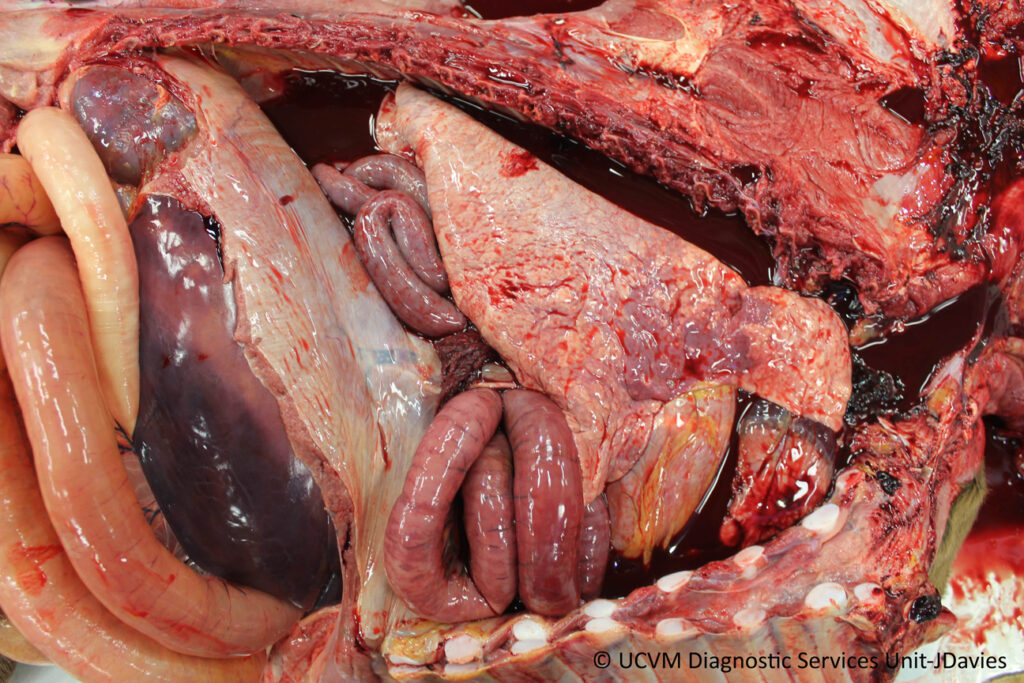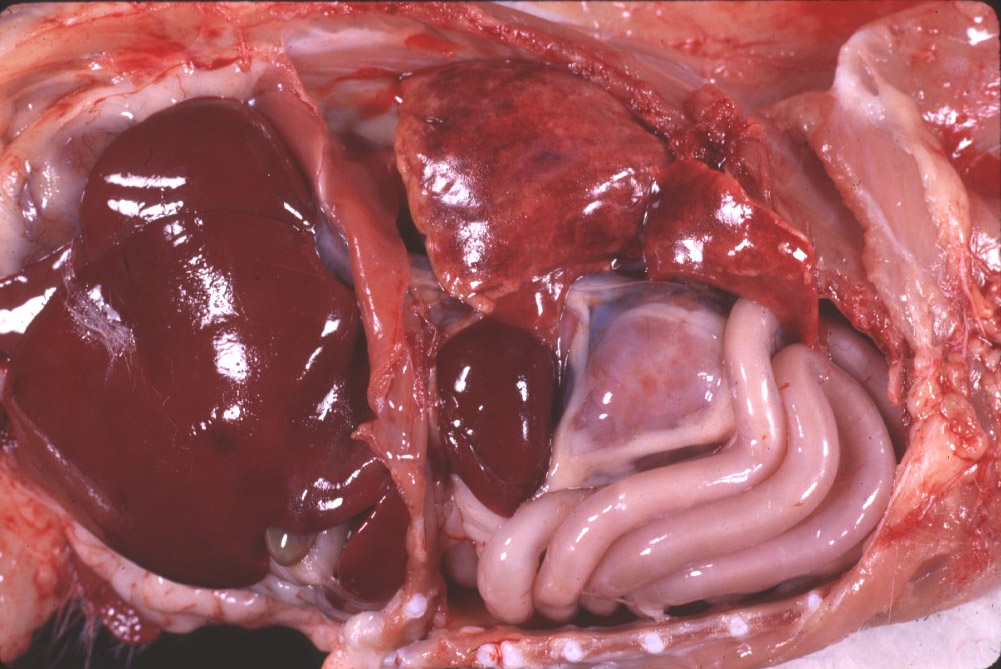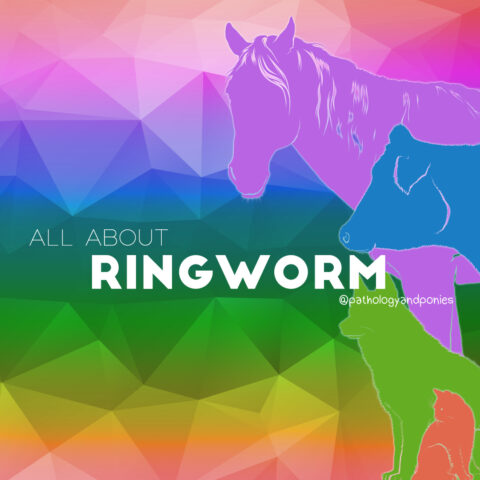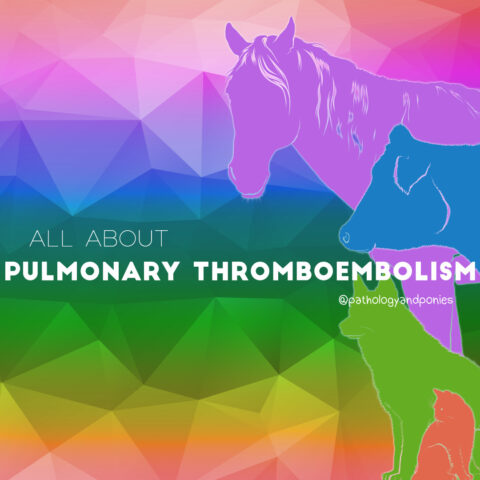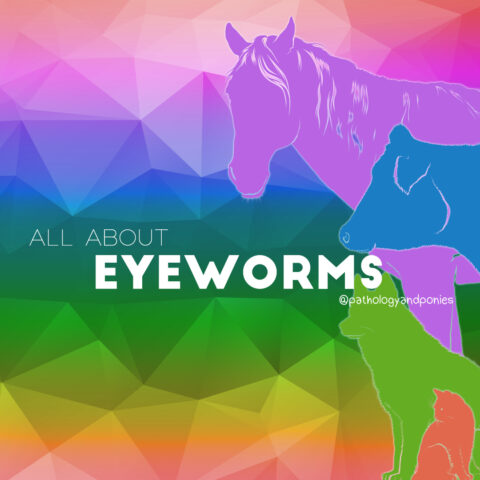Today’s path rounds are on 𝐝𝐢𝐚𝐩𝐡𝐫𝐚𝐠𝐦𝐚𝐭𝐢𝐜 𝐡𝐞𝐫𝐧𝐢𝐚𝐬!
𝐖𝐡𝐚𝐭 𝐢𝐬 𝐢𝐭?
𝐇𝐞𝐫𝐧𝐢𝐚𝐬 in general are when the intestine becomes displaced through a hole it’s not supposed to go through. These can occur in many different locations! Today we’re going to talk about 𝐝𝐢𝐚𝐩𝐡𝐫𝐚𝐠𝐦𝐚𝐭𝐢𝐜 𝐡𝐞𝐫𝐧𝐢𝐚𝐬 specifically, which is where the intestines become displaced through a hole in the diaphragm.
𝐖𝐡𝐨 𝐠𝐞𝐭𝐬 𝐢𝐭?
Any species can get this!
𝐖𝐡𝐚𝐭 𝐜𝐚𝐮𝐬𝐞𝐬 𝐢𝐭?
Pretty much anything that can cause a hole in the diaphragm to form can lead to a diaphragmatic hernia. In some cases, the animal may have been born with a hole in the diaphragm due to improper development.
However, the most common cause is trauma, like being hit by a car. This sudden impact increases the pressure in the abdominal cavity, leading to tearing of the diaphragm to try and alleviate the pressure. This pressure then causes the intestines to push through the hole into the chest!
𝐖𝐡𝐲 𝐢𝐬 𝐭𝐡𝐢𝐬 𝐚 𝐩𝐫𝐨𝐛𝐥𝐞𝐦?
Surprisingly, many animals can live with diaphragmatic hernias with minimal symptoms! As long as the intestine is able to move freely within the hole, and doesn’t become twisted or compromise other organs, owners may not know their animal has a diaphragmatic hernia.
These hernias can begin to cause issues if they become 𝐢𝐧𝐜𝐚𝐫𝐜𝐞𝐫𝐚𝐭𝐞𝐝, meaning that the intestine is no longer able to move freely and becomes stuck in the chest. This is typically caused by formation of scar tissue around the diaphragm hole, which contracts down and makes the hole too small for free movement of intestine. This can interfere with normal movement of gut contents, causing accumulation of fluid in the portion of the intestine in the chest. This predisposes it to 𝐯𝐨𝐥𝐯𝐮𝐥𝐮𝐬 (twisting, cutting off blood flow) or even rupture.
𝐇𝐨𝐰 𝐢𝐬 𝐢𝐭 𝐝𝐢𝐚𝐠𝐧𝐨𝐬𝐞𝐝?
Typically these are diagnosed on either an X-ray or an ultrasound, however the veterinarian may have an initial suspicion if they hear gut sounds when they try to listen to the lungs!
𝐇𝐨𝐰 𝐢𝐬 𝐢𝐭 𝐭𝐫𝐞𝐚𝐭𝐞𝐝?
These lesions have to be treated surgically. In this surgery, the abdomen is opened and the intestines are pulled back through the hole in the diaphragm, then the hole is closed to prevent a repeat hernia. Animals tend to do fairly well after surgical repair, assuming they weren’t having major issues before they went for surgery.
𝐏𝐡𝐨𝐭𝐨𝐬
1-5) Diaphragmatic hernias with varying stages of badness. To help orient yourself, remember that the liver (big brown thing) sits right along the abdomen side of the diaphragm. Any intestines on the other side of the liver are in the wrong place!
6) An example of a hole in the diaphragm that let intestines slide through.
𝐒𝐨𝐮𝐫𝐜𝐞𝐬
Maxie, G. Jubb, Kennedy and Palmer’s Pathology of Domestic Animals, Volume 2. Sixth Edition.
Photos 1-3, 6 courtesy of University of Calgary Diagnostic Services Unit.
Photos 4-5 courtesy of Noah’s Arkive.

